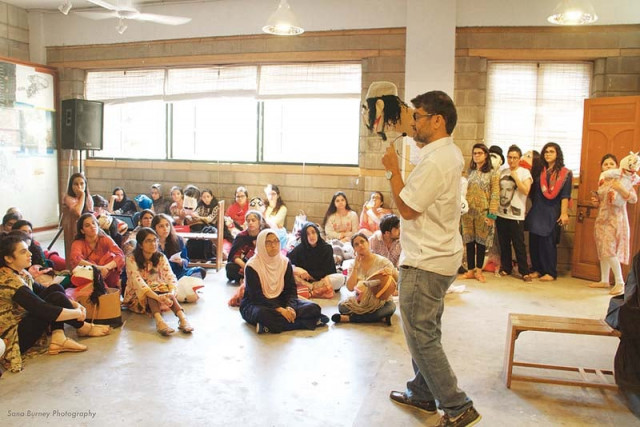
The leaps that the world of visual effects has taken in recent times have enabled us to create virtually anything on screen. However, with that we have deprived audiences of the enchanting world of puppetry that would magically bring inanimate objects to life. With animated cartoons largely taking over TV programming for children, producers of the 2011 film Muppets decided to reintroduce Kermit and the rest of his gang but this time to a larger and more adult audience. The experiment worked, with the movie breathing life into the popular franchise yet again.

Taking a leaf out of the same book is Pakistani puppeteer Kazim Shigri who is keen on restarting the puppetry culture within the country. A graduate of the National College of Arts, Lahore, Shigri is a production and set designer by profession who has remained fascinated by puppets since his college days where he formed his own puppet, mime and performance group called Behroop Theatre.
Curtain Rises: Play examines political situation
Having recently conducted a workshop with Indus Valley School of Arts and Architecture students, the puppeteer spoke at length about the prospects of the art with The Express Tribune.
“Basically it was a short course where students were asked to explore different materials and their functionalities,” stated Shigri. Employing elements and principles used in 2D and 3D modelling, the students worked with dynamics such as movement, direction, and ergonomics to create functional string and glove puppets.
Touching upon the entire puppet-making process from its conception to demonstration, the session culminated in the shape of a final performance by the students.
Impressed by the talent that he had come to witness, Shigri said that for this form of performing arts to prosper in Pakistan, it will require more than just talent alone. “The government and other art institutes need to start taking the initiative if the scenario is to improve. Performances need to happen regularly so that artistes can have a stable source of income,” he said. “There are countless puppeteers performing local and folk theatre, putli tamasha, in cities such as Bahawalpur and Multan for very little money,” he added.
Film festival: ‘The story you tell is what matters in making movies’

Despite this localised form of puppetry’s existence, he said one cannot rule out the importance of training for emerging puppeteers. Barring a few institutions, such as Rafi Peer Theatre, not many are willing to lead the line, disregarding the art form as “something for children.” I offered National Academy of Performing Arts (Napa) to conduct courses for puppetry but they said they only train students in drama theatre, he said.
Citing the example of puppetry in Western countries, he reasoned that, unlike in our part of the world, this form of performing arts is not restricted to children. “Over there, you have troupes performing puppet shows on serious and intense topics.”
Not willing to speculate on the future of puppetry in the country, Shigri was of the opinion that it is imperative for local puppeteers to penetrate the commercial market. “The success of 3 Bahadur earlier this year showed the true potential of Pakistan’s entertainment industry and market. Animation studios abroad tend to hire puppeteers to work in collaboration with them on films and TV shows. Maybe we can strike a similar partnership here as well.”
Published in The Express Tribune, November 2nd, 2015.
Like Life & Style on Facebook, follow @ETLifeandStyle on Twitter for the latest in fashion, gossip and entertainment.


















COMMENTS
Comments are moderated and generally will be posted if they are on-topic and not abusive.
For more information, please see our Comments FAQ